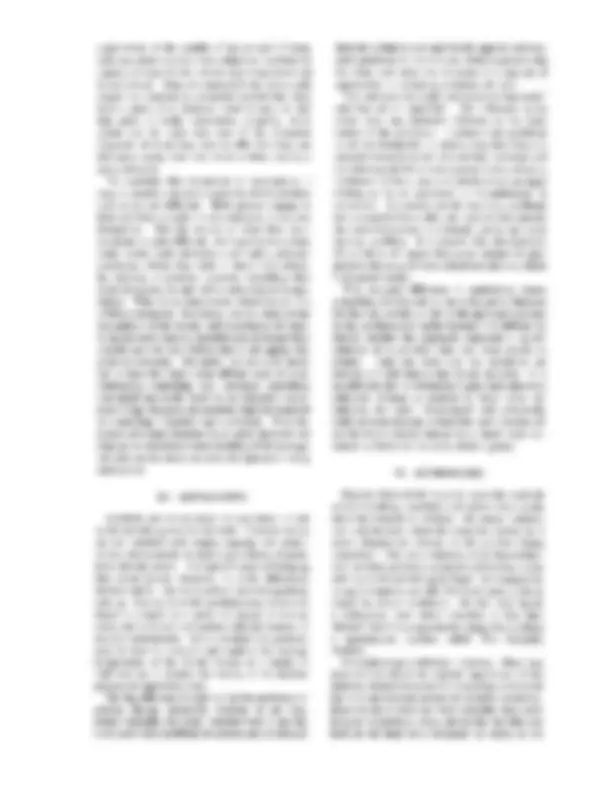






Study with the several resources on Docsity

Earn points by helping other students or get them with a premium plan


Prepare for your exams
Study with the several resources on Docsity

Earn points to download
Earn points by helping other students or get them with a premium plan
Community
Ask the community for help and clear up your study doubts
Discover the best universities in your country according to Docsity users
Free resources
Download our free guides on studying techniques, anxiety management strategies, and thesis advice from Docsity tutors
John banville's essay explores the idea that modern science, particularly physics, is acknowledging the poetic and contingent nature of its truths and laws. He discusses the similarities and differences between art and science, and the role of technology in each field. Banville argues that despite their differences, art and science share an essential level of indistinguishability.
Typology: Papers
1 / 8

This page cannot be seen from the preview
Don't miss anything!





is to be found nowhere else in our lives. We cannot remember our birth, and we shall not know our death; in between is the ramshackle circus of our days and doings. But in a poem, a picture, or a sonata, the curve is completed. This is the triumph of form. It is a deception, but one that we desire, and require. The trick that art performs is to transform the ordinary into the extraordinary and back again in the twinkling of a metaphor. Here is Wallace Stevens again, in lines from his poem Notes Toward a Supreme Fiction (1942): You must become an ignorant man again And see the sun again with an ignorant eye And see it clearly in the idea of it.* This is the project that all artists are embarked upon: to subject mundane reality to such intense, passionate, and unblinking scrutiny that it becomes transformed into something rich and strange while yet remaining solidly, stolidly, itself. Is the project of pure science any different? …When Copernicus posited the horrifying notion that not the Earth but the sun is the center of our world, he literally put man in his place, and he did it for the sake of neither good nor ill, but for the sake of demonstrating how things are. A commentary by Ryuji Takaki, Kobe Design University Science is an activity to observe objects and phenomena in the nature and to construct consepts and natural laws. Art is an activity to make objects and performances based on the concepts and laws. Therefore, the essential difference of scirnce and art lies in the "relation between objects and concests". Other properties, such as importance of creative mind, necessity of publication, etc, are common in both activities. For example, The Ohm's law is established by observing phenomena in electric circuits (this is science). On the other hand, from the scientific results one makes up electric equipments (this is technology). Furthermore, one makes art works incluiding electric parts. In this sense the technology and art are similar to each other. Both activities are aimed at creating valuable things, materially valuable in technology and mentally valuable in art. In contrast, the science is originally aimed at increasing knowledges, and not valuable things. The relation between science and art is shown schematically below. Objects science Concepts
Art, Technology A commentary by Ernesto Sabato, from “ Latin America: a different way forward?” The basic difference between science and art lies in the fact that scientists strip away the self from their view of the world, while artists do not aspire to such abstraction. The originality of art lies precisely in this apparent incapacity, which explains why art has style while science does not: it would be meaningless to look for the "style" of Pythagoras in his celebrated theorem. The language of science is ultimately no more than a sequence of abstract and impersonal symbols, while a work of art is a unique and original mark left on the world, the concrete expression, enigmatic and uncertain, of a creature of flesh and blood.
A commentary by Alexander McBirney on the book “Einstein, Picasso: Space, Time, and the Beauty That Causes Havoc” by Arthur I. Miller In trying to contrive a parallel between the contributions of Einstein and Picasso, Miller overlooks a fundamental difference between science and art. Science is progressive; art is cumulative. Each new scientific contribution builds on what has gone before, replacing old ideas with new ones. An innovative work of art does not make earlier work outdated. It simply adds to a gallery that includes centuries of work by artists in countless different cultures. Thus when Picasso rejected the rules of perspective and painted a nude woman as a geometrical figure with eyes in the back of its head he was not discovering new principles that made all that had gone before obsolete. He was simply introducing yet another mode of artistic expression.